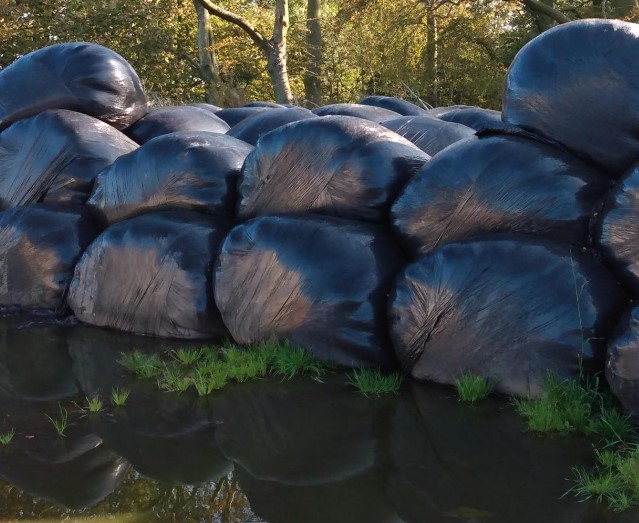What To Do If Your Forage Is Affected By Flooding
6 March 2020If you have had forage damaged by flooding than there are a few things you can do on farm to assess the nutritional effect and minimise the risks. A good first step is to calculate how much forage is available. You can use the FAS forage budgeting tool to assess your feed stocks https://www.fas.scot/downloads/feed-and-forage-factsheet/. As part of your forage budget it would be useful to treat damaged forage separately. To carry out an accurate forage budget you will require the dry matter of the silage. Therefore it would be worth getting an analysis done or you can test it at home in the microwave (be very careful it doesn’t catch fire).
Measuring the risk:
Feeding forage damaged by flooding has a high risk of bacterial contamination. Particularly if flooded by slurry/sewage waste. Listeria, clostridia, bacilli and enterobacteria are a particular risk as these can lead to abortion and possibly death. Therefore if you do have contaminated forage it’s important to consider if the risk of feeding is worth it. Discard visibly mouldy patches and the area surrounding the mould as this is where the listeria bacteria and mycotoxins will be. Do not put mouldy bales through a chopper as this will distribute the contaminated silage, leading to more animals consuming the harmful bacteria.
Some ways of measuring the hygienic risk are to compare the affected silage to undamaged silage and look at the texture, smell and pH. If the silage has a gritty type texture when you rub it together then this would indicate soil contamination. This can particularly be evident in bales which have washed out the water and soil/silt remains. The risk of listeria is high from soil contamination and antagonism against minerals in the rumen. If it feels slimy there has been some clostridial secondary fermentation. The pH can be tested using pH strips which can be purchased online relatively cheaply, this will also give an indication of any secondary fermentation when you compare the pH to an unaffected sample.
Actions:
- Conduct a forage budget – if you are short and need to feed damaged bales, try to use them immediately to reduce bacterial risk.
- Avoid feeding the worst of the contaminated forage to any high producing animals, such as in calf cows and pregnant ewes.
- Store cattle are the least sensitive but where possible dilute it with better uncontaminated forage.
- Clean the face off the silage clamp before feeding.
- Assess the bales wrap integrity and repair with tape where possible.
- Assess the hygienic risk- look at texture, pH and smell compared to uncontaminated forage.
Mary Young, mary.young@sac.co.uk
Sign up to the FAS newsletter
Receive updates on news, events and publications from Scotland’s Farm Advisory Service

